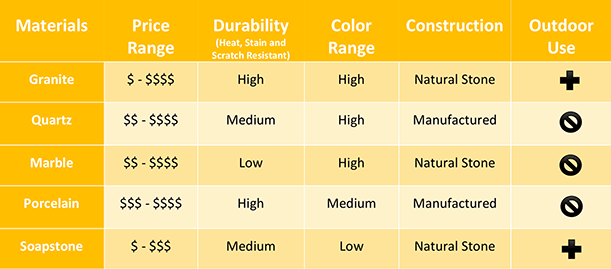Quartz: How It’s Made, Pros, and Cons

PROS
Easily cleaned
Quartz does not need to be sealed and stains can be easily removed with soapy water, however, harsh chemicals should be avoided due to the resin.
Antimicrobial
The resin that binds the aggregated quartz, which makes it nonporous, meaning bacteria and mildew cannot penetrate your quartz surface.
Aesthetics & endless design options
Quartz can come in many colors and due to its flexibility, it can be shaped in ways natural stones cannot. This included served edges, sink shapes, floors, and tiles.
CONS
No extreme heat
Quartz is heat resistant, but it’s always best to use a trivet. Sudden changes in temperatures could lead to the quartz cracking.
No outdoors
Quartz was not meant to be exposed to the elements, including the direct sun, which can cause fading and splitting.


